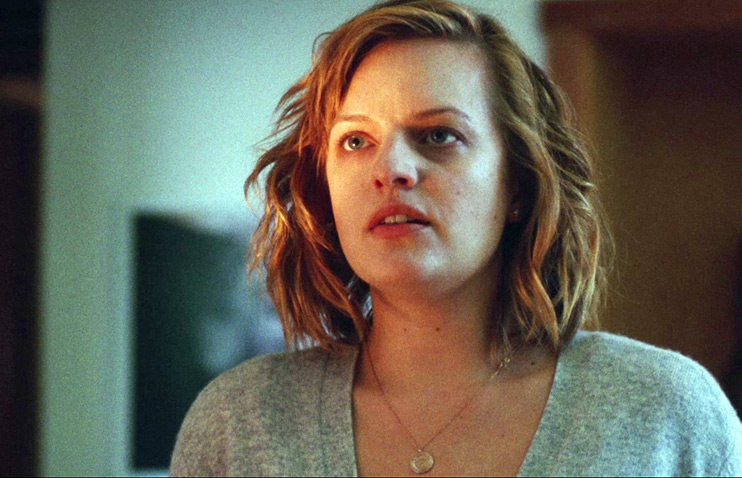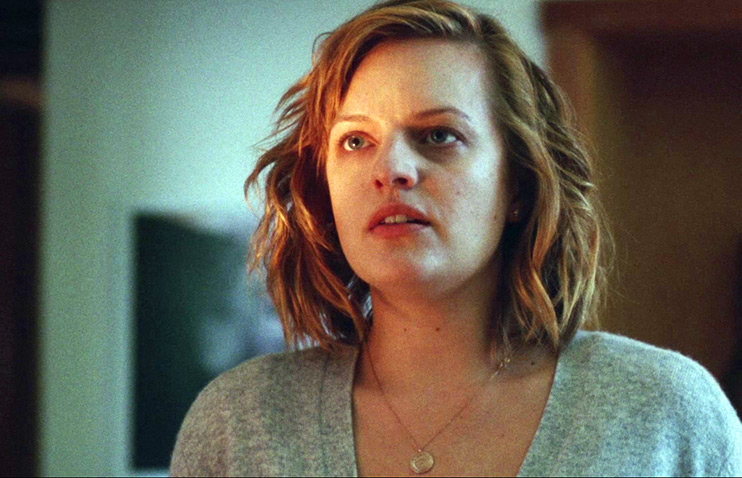 In response to an Indiewire article which asked whether indie filmmakers can afford to shoot film, Alex Ross Perry explains below why shooting on film is affordable.
In response to an Indiewire article which asked whether indie filmmakers can afford to shoot film, Alex Ross Perry explains below why shooting on film is affordable.
It is quite simple and affordable to shoot a movie of almost any budget on actual, honest to god celluloid. Perhaps I’m not the best authority on the subject; I have never actually shot a film on a digital format. “Queen of Earth” is my fourth film; the first, “Impolex,” was made in 2008 with a $15,000 budget and shot on Fuji 16mm film. So ever since then I’ve been getting asked, and really earnestly explaining in the hopes that my words mean something: how?
WATCH: Can Indie Filmmakers Afford to Shoot on Film?
“Impolex” was shot in seven days. I think we bought 40 rolls of film. However many it was, the total was something like $2,500 and processing was another $3,000 or so. We got the Aaton camera for free because my cinematographer, Sean Price Williams, worked for the late great Albert Maysles and the company had all this older equipment just sitting around that nobody used or cared about. This is an important thing to remember when planning to shoot on film: practically nobody else wants that equipment so if you can’t get it for free, you should be able to get it for basically nothing. The same cannot be said for whatever new Red camera is in high demand – if you won’t pay $500 a day for it, somebody else will. For a 16mm camera, I’d be surprised if anybody paid $500 for a whole week. So if you are making a small independent film with a shoot of about two weeks, the film stock, camera package and processing could be as low as five to six thousand dollars. Add another forty percent for each additional week.
 “The Color Wheel” shot for about three weeks on black and white Kodak 16mm. Black and white was cheaper to purchase by a wide margin; I bought 80 rolls of it for $3,000 and still have about 15 in my closet. Oddly, it cost slightly more to process because the lab we used (Movielab, in Rockville Maryland) only did black and white processing two days a week. It’s probably even less now. I think for the 55 or so rolls we shot, the total cost to get it all on a hard drive and ready to edit was an additional $8,000.
“The Color Wheel” shot for about three weeks on black and white Kodak 16mm. Black and white was cheaper to purchase by a wide margin; I bought 80 rolls of it for $3,000 and still have about 15 in my closet. Oddly, it cost slightly more to process because the lab we used (Movielab, in Rockville Maryland) only did black and white processing two days a week. It’s probably even less now. I think for the 55 or so rolls we shot, the total cost to get it all on a hard drive and ready to edit was an additional $8,000.
These are numbers that can be justified under any practically any production budget. For me, it’s always been about deciding that whatever dollar amount the actual film stock and processing would comprise and backing the budget into that. Even on a much larger production like “Listen Up Philip” with a 25 day shoot, the producers were understanding of the value our film would ultimately have, aesthetically as well as from a marketing perspective, if we stuck to shooting on Super 16mm. (A first for me and slightly more expensive, but not by much.)
The numbers we landed on for shooting film on “Queen of Earth” were partially borrowed from producer Joe Swanberg’s identical production budget and model for his own Super 16mm film “Happy Christmas.” In fact, we were able to shoot quite a bit more because he shot in Chicago and had to ship film in and out. We picked it up at Kodak’s office in midtown (R.I.P.) and dropped it off at Postworks downtown (R.I.P.) [Note: Technicolor-PostWorks remains fully operational, providing a multitude of post-production services not related to motion-picture film processing and printing]. So we bought $11,000 worth of Kodak Super 16mm and then paid close to $15,000 to develop and scan it. Our camera and lighting package was about $10,000 but you’d absolutely be paying the same if renting a fancy pants HD camera and also you have to buy a bunch of hard drives and have some person on set whose sole job is to move stuff off of memory cards or whatever and deal with the footage all day. That’s a whole extra mouth to feed, bed to rent, seat in the van, and so on. It adds up and the ultimate difference between film and digital on a production of this size isn’t 5:1. It’s probably more like 4:3 when you factor in all the nonsense you are paying for regardless. I know shipping would be an issue, even in New York, now that these facilities we used a long eleven months ago have closed, but it’s still not prohibitive.
 Color correction will cost the same. Once the footage is scanned and edited, it doesn’t matter what the origin was, except now you aren’t paying some tech nerd in a post house several thousand dollars to press buttons and adjust knobs in order to retroactively add an visual aesthetic to your movie that realistically, you could have just spent the same amount of money on set and had that texture and experience be genuine instead of inauthentic. Generally people really don’t seem to connect with that process, and it doesn’t matter if you shot on old converted 35mm lenses either. The eye won’t connect with digital trickery the same way it will with tried and true imperfect film grain. It may look great and interesting in its own way, as many filmmakers have proven starting, for me, with “Zodiac,” but at these budget levels, you essentially are saving a little money on the format and then spending it later on somebody who works on your movie for like three days and probably gets paid more than most of the crew who woke up at seven am and worked for twelve hours. Forget aesthetic concerns: that’s just not fair!
Color correction will cost the same. Once the footage is scanned and edited, it doesn’t matter what the origin was, except now you aren’t paying some tech nerd in a post house several thousand dollars to press buttons and adjust knobs in order to retroactively add an visual aesthetic to your movie that realistically, you could have just spent the same amount of money on set and had that texture and experience be genuine instead of inauthentic. Generally people really don’t seem to connect with that process, and it doesn’t matter if you shot on old converted 35mm lenses either. The eye won’t connect with digital trickery the same way it will with tried and true imperfect film grain. It may look great and interesting in its own way, as many filmmakers have proven starting, for me, with “Zodiac,” but at these budget levels, you essentially are saving a little money on the format and then spending it later on somebody who works on your movie for like three days and probably gets paid more than most of the crew who woke up at seven am and worked for twelve hours. Forget aesthetic concerns: that’s just not fair!
My point is that shooting on film is like anything: if it is of importance you will find a way to make it happen. Nobody will know that you were able to buy an extra two days of filming by shooting on an Alexa but they will know if you are the rare independent film that was shot on actual film. You definitely will have to make a compromise or two but what you get in return is an instant and overwhelmingly present aesthetic that will do more in carrying the audience to whatever place you want them to be than just about anything else money can buy.
 Here’s a fun secret about places like Kodak and Movielab and my preferred New York City film scanning and post house, Metropolis Post: they want to stay in business. You see, in America, business is predicated upon charging people money for services provided. I’ve never paid retail for a single foot of film stock. Anne Hubbell at Kodak has made it possible to shoot Kodak by offering us a great discount, throwing a few rolls in as a thank you, and in exchange I blather on about how achievable film is for five years. Plus she came to the “Queen of Earth” set with not just apple cider, but also apple cider donuts. Will the Alexa technician coming to fix your broken computer camera do that? I imagine not, though I suppose anything is possible. These places are likely to help you however they can to bring your money in, even if it is a touch less than the normal price they would charge a commercial or something. In America, some money is better than no money.
Here’s a fun secret about places like Kodak and Movielab and my preferred New York City film scanning and post house, Metropolis Post: they want to stay in business. You see, in America, business is predicated upon charging people money for services provided. I’ve never paid retail for a single foot of film stock. Anne Hubbell at Kodak has made it possible to shoot Kodak by offering us a great discount, throwing a few rolls in as a thank you, and in exchange I blather on about how achievable film is for five years. Plus she came to the “Queen of Earth” set with not just apple cider, but also apple cider donuts. Will the Alexa technician coming to fix your broken computer camera do that? I imagine not, though I suppose anything is possible. These places are likely to help you however they can to bring your money in, even if it is a touch less than the normal price they would charge a commercial or something. In America, some money is better than no money.
 I’m not bragging about how cool it is that I’ve found a way to shoot on film. I’m not saying movies shot on film are better, more interesting or more screenable than movies shot digitally. I am providing these numbers from my own personal experience simply to show that if you want to shoot on film, you will be able to shoot on film. People will be excited by the quality of the image you are providing them and at the very least, it will be a selling point for a tiny movie that needs every hook to convince an audience to check it out. If your dream is to shoot for 30 days and do 20 takes of every thing because you believe your micro-budget film could achieve perfection by any means whatsoever, do not try to shoot on film. Your priorities are different and that’s totally fine. However, I believe there are a lot of filmmakers willing to cram a shoot into 12 days so as to be able to shoot 16mm. If any of them have any questions, the companies I listed above are willing to take your money and make it happen. Nobody should be able to provide an argument that shooting on film is not achievable on any budget.
I’m not bragging about how cool it is that I’ve found a way to shoot on film. I’m not saying movies shot on film are better, more interesting or more screenable than movies shot digitally. I am providing these numbers from my own personal experience simply to show that if you want to shoot on film, you will be able to shoot on film. People will be excited by the quality of the image you are providing them and at the very least, it will be a selling point for a tiny movie that needs every hook to convince an audience to check it out. If your dream is to shoot for 30 days and do 20 takes of every thing because you believe your micro-budget film could achieve perfection by any means whatsoever, do not try to shoot on film. Your priorities are different and that’s totally fine. However, I believe there are a lot of filmmakers willing to cram a shoot into 12 days so as to be able to shoot 16mm. If any of them have any questions, the companies I listed above are willing to take your money and make it happen. Nobody should be able to provide an argument that shooting on film is not achievable on any budget.
IFC Films will release Alex Ross Perry’s “Queen of Earth” on August 26th in New York with a national rollout to follow. It is available on iTunes now.
READ MORE: Joe Swanberg on Why He Chooses to Shoot on Film and Doesn’t Rehearse



